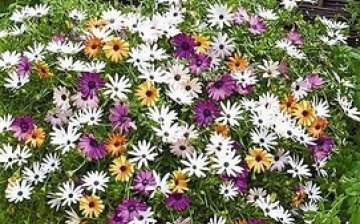Growing osteospermum in the open field
Recently, many have had the opportunity to decorate their flower beds with such a bright exotic flower as Cape daisy. This plant conquered gardeners with its unusual flower shape, as well as abundant and long flowering. But the cultivation of osteospermum in our latitudes requires some specific skills.
A bright guest in our flower beds
Although at home, in Africa, osteospermum is a perennial plant, severe European winters allow it to be grown only as an annual garden plant or as a house flower. That is why, out of more than 70 species of African chamomile, the most popular variety is Osteospermum Eklona. If the plant must be preserved as a perennial, in the fall the flower will have to be transferred to a bright, cool room and ensure minimal watering.
Care and cultivation
Osteospermum is a visitor from hot countries and prefers well-warmed and brightly lit places with light, fertile soil. At the same time, the plant should be watered sparingly, it is enough to make sure that the ground around the plant does not dry out completely. Ostuospermum, a native of hot Africa, is not afraid of even a slight drought. But shading and excess moisture can be detrimental to the Cape daisy. During the flowering period, African chamomile must be fed with mineral fertilizers. To form a neat bush and stimulate flowering, it is advisable to pinch from time to time. It is also necessary to timely cleanse the plant from faded inflorescences. If you plan to grow osteospermum as a perennial plant, the plant is planted in containers that are outdoors in summer, and stored in a heated winter garden from autumn to spring.



